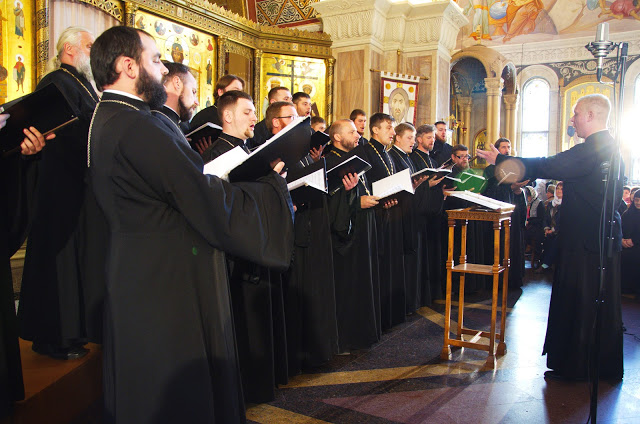
Andrei Rublev was another, no less brilliant artist of the era of Hesychasm. He was the complete opposite of Theophanes the Greek, although they grew up practically on the same spiritual ground. The connection between Rublev’s art and Hesychasm is obvious, but in his case all the main tenets of the doctrine receive a completely different interpretation and a distinct visual representation. Whereas Theophanes the Greek was first of all a colorist – his rich colors are charged with amazing energy, and light for him is a fire that is hidden in a fragile and precious vessel of the human body, the icons by Andrei Rublev are completely different. They are also full of light, but the quiet light evenly fills the space of the icon. Theophanes’s light concentrates the shape, Rublev’s light expands the space. Theophanes paints the kind of light that incinerates the flesh; on the contrary, Rublev’s light transforms the flesh.
Rublev’s images are always characterized by balance and calm state of mind, they are like pure transparent water (Theophanes, as we have seen, paints images of fiery nature).
Together with his friend Daniil Cherny, Rublev painted the frescoes of the Assumption Cathedral in Vladimir in 1408. The very common composition The Last Judgment occupies the central place in this ensemble.

A person of the modern age tends to assume that medieval eschatology was somewhat gloomy and frightening.
But Andrei Rublev and Daniil Cherny deal with the theme of the Last Judgment and the Second Coming in line with the Hesychast theology of light: And this is the condemnation, that light is come into the world (John 3:19). The focal point of the composition is the Prepared Throne (Etimasia), which is venerated by the Mother of God, the Myrrh-bearing women and angels. The image of Christ coming back into the world is at the zenith of the vault. The Savior is depicted in golden garments against a background of blue circles. His whole figure is in motion toward those who are waiting. The apostles seated on twelve thrones are displayed on the slopes of the vault. There are choirs of angels behind them. The entire composition is permeated with quiet light and filled with the joy of anticipation. Harmony and accord, wisdom and grandeur are all combined in the images of the apostles talking to the angels. No one has a single shade of fear associated with the Last Judgment: Perfect love casteth out fear (1 John 4:18).
Light that comes into the world is love that transforms the world. This is Andrei Rublev’s concept. He focuses not on the darkness he fights, but on the light that wins in the end.
None of the Russian artists will ever achieve such clarity and purity. Subsequent generations will be “saved by fear” (Jude 1:23), and the theme of the Second Coming of the Lord will be relegated to the background of the Last Judgment icons. The focus will shift to painting the hellfire torments prepared for sinners, whose images will be painted with more and more perfection.
Rublev depicts the Antichrist in a very unusual way.

Illustrating Daniel’s prophecy about four kingdoms (Dan. 7:3-7), the artist portrays four beasts. Artists generally portray the Antichrist as a terrible monster, whose appearance alone can be terrifying. Rublev, on the other hand, depicts a little gray dog or hyena, which is more disgusting than terrible. This is very indicative: the viewer does not fear sin, but instead shuns it. Abhor that which is evil; cleave to that which is good (Romans 12:9).

The general spirit of the Vladimir frescoes is best expressed by the figure of the Apostle Peter, shown in an attempt to reach the Savior (Apostle Peter Leads The Righteous Into Paradise). This is the fulfillment of the words that Christ once said, I will see you again, and your heart shall rejoice, and your joy no man taketh from you (John 16:22). This is how Andrei Rublev addresses the theme of the Last Judgment. However, this turn from the darkness of hell to the light of the Gospel of Christ is not so unexpected in the context of the Hesychast mystical tradition. This approach better reveals the true spirit of Orthodoxy than the gloomy eschatology that prevailed in later times. After all, there is a litany at every Liturgy, which contains the following words: “We ask for a good defense before the awesome judgment seat of Christ.”
All in all, the art of Andrei Rublev indicates how deep the doctrine, which captivated the entire Orthodox world in a single movement, penetrated into the Russian spiritual soil. The icons of Andrei Rublev are, if I may say so, the Russian version of Hesychasm, which combined the general spiritual laws with the Russian mentality.



